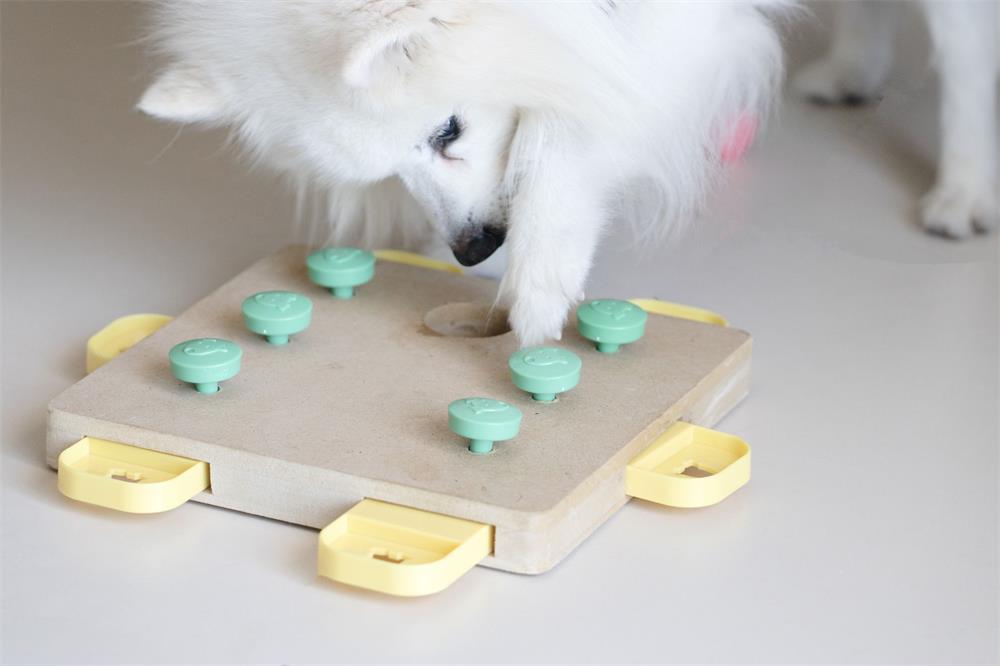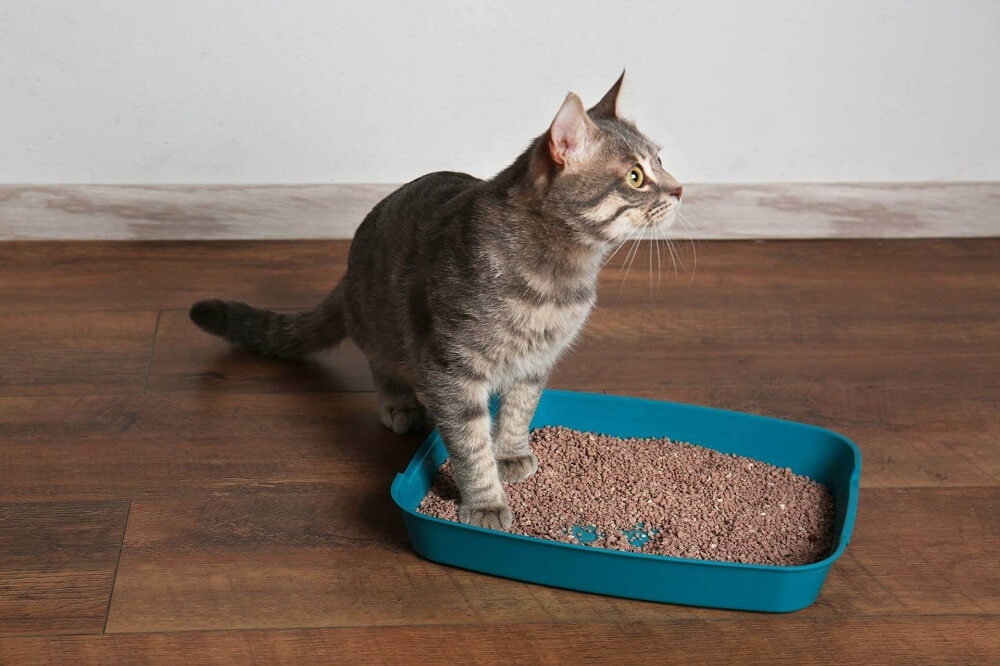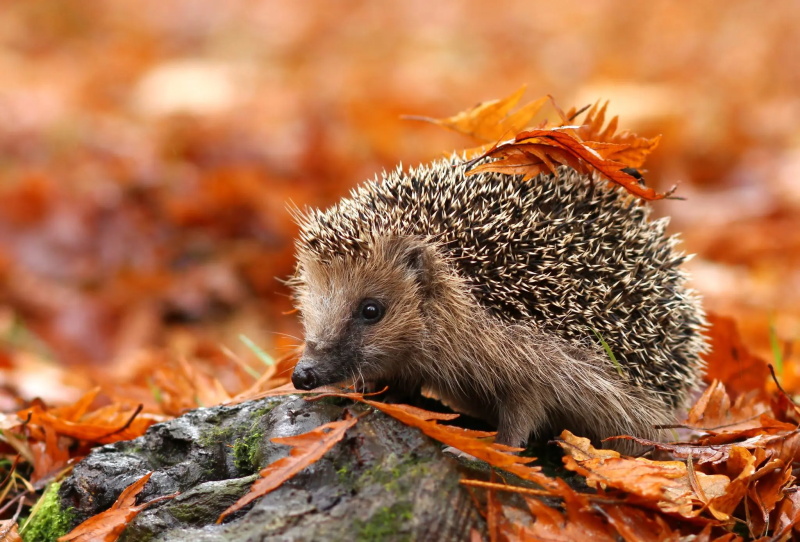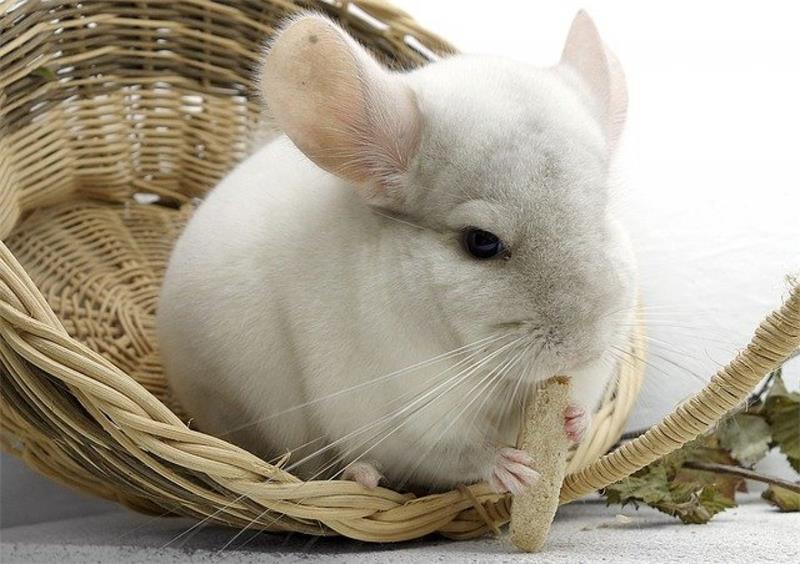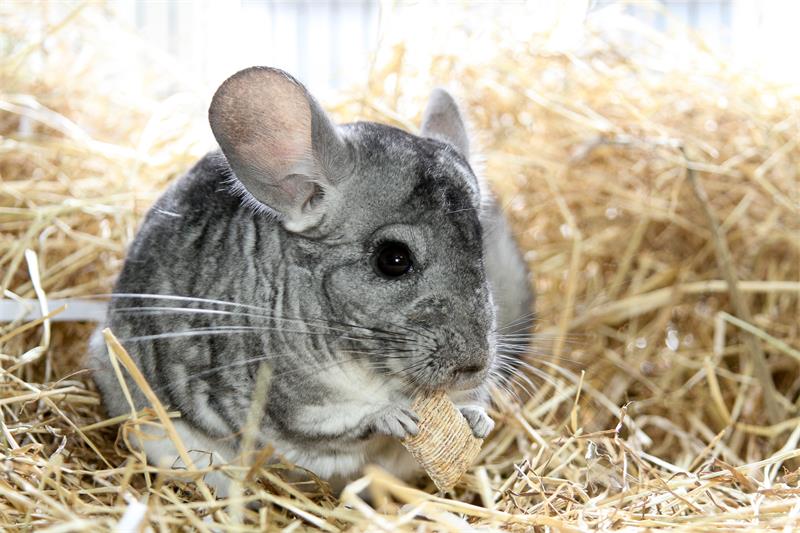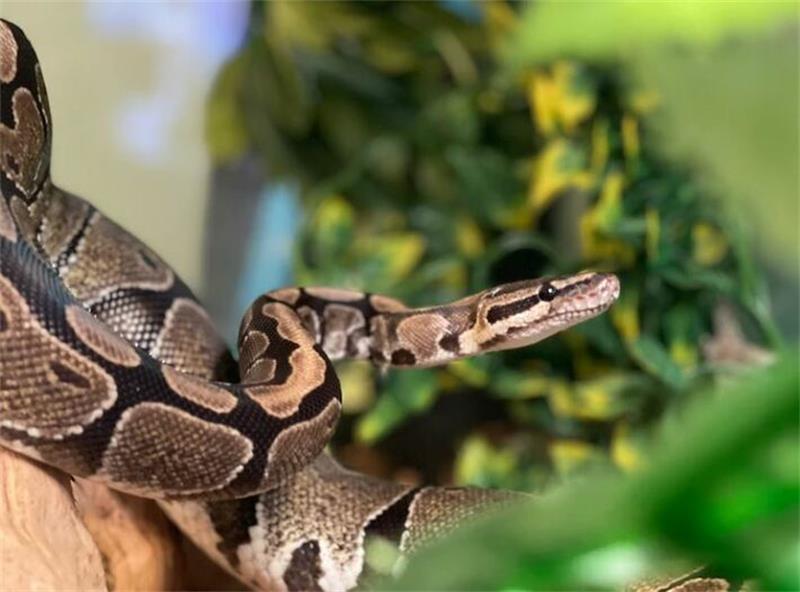
Table of Contents
Ball pythons are one of the most popular pet snakes in the world, thanks to their docile temperament, manageable size, and beautiful color variations. However, like any animal, they also have specific needs and requirements that must be met in order to keep them healthy and happy. As a responsible ball python owner, you should learn everything you can about these fascinating creatures before bringing one home. This complete guide will teach you everything you need to know about ball python care and how to keep your snake healthy for years to come!
About Ball Pythons
Ball pythons (also known as royal pythons) are a terrestrial species of constricting snake native to regions of western and central Africa. In the wild, they are most often found in semi-arid grasslands, forests, and near agricultural areas. They spend most of their time burrowing and hiding. Ball pythons are crepuscular, which means that they are most active at night, but especially active around dawn and dusk. As ambush hunters, they actively track down and then wait for prey such as rodents, birds, and lizards to scurry past before striking, using powerful constricting muscles to squeeze the prey until it passes out (which is humane and occurs within seconds).
Ball pythons are sexually dimorphic, which means there is a noteworthy difference in size between males and females. According to an extensive survey by Aubret et al., males typically grow 3.6-4.3′ (109-131 cm) long, while females grow to be 3.8-4.5″ (114-136 cm) long. However, larger individuals have been recorded in captivity, likely due to more plentiful food. Ball pythons reach sexual maturity in 3-5 years and have a 15-30 year lifespan in captivity. However, older individuals have been reported.
This species is well known for its incredible genetic diversity; part of their current popularity is due to a fad for producing “morphs”: variations in color and pattern. Many experienced hobbyists take on ball python breeding as a study in snake genetics. Because of this trend, the market is currently saturated with snakes who didn’t make the cut for the next generation, and so breeding should be attempted with extreme caution. They are very popular in the pet trade and are often sold as beginner pets due to their docile temperaments and manageable size. Although ball python care isn’t necessarily “easy”, their hardiness still makes them a good fit for new reptile keepers.
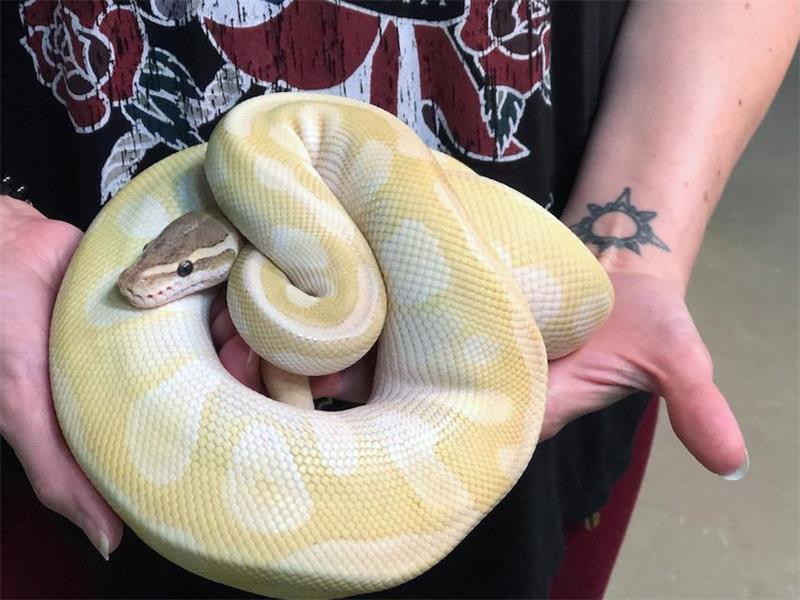
Housing
Housing is one of the most important aspects of ball python care, as it affects your snake’s health, behavior, and well-being. You should provide your ball python with an appropriately sized and secure enclosure that has the following features:
- Size: A very young snake can be housed in a 10-20 gallon tank. You will need to increase habitat size beyond 20 gallons as your snake grows to adulthood. A ball python will reach adult size in about 3 years. An adult should be housed in a tank that is large enough for them to stretch out fully. A 40-gallon breeder tank is the minimum recommended tank size for an adult ball python.
- Security: Your enclosure should have a tight-fitting lid or door that can be locked or secured with clips or weights. Ball pythons are notorious escape artists and will exploit any gaps or weaknesses in their enclosure. You should also make sure that there are no sharp edges or loose wires that could injure your snake inside or outside the enclosure.
- Substrate: Substrate is the material that covers the bottom of your enclosure. It serves several purposes: it absorbs moisture and waste, provides traction and comfort for your snake, and enhances the appearance of your habitat . There are many types of substrate that you can use for your ball python, such as paper-based bedding, reptile carpet, forest bedding, or Aspen wood shavings . You should avoid using pine or cedar bedding, as they contain oils that can irritate your snake’s skin. You should also avoid using sand, gravel, or corn cob bedding, as they can cause impaction if ingested by your snake . You should change your substrate regularly and spot-clean any soiled areas as needed.
- Temperature: Temperature is another crucial factor for ball python care, as it affects your snake’s metabolism, digestion, immune system, and activity level . You should provide your ball python with a temperature gradient of 95°F for the warm end and 78°F for the cool end . This will allow your snake to regulate its body temperature by moving between different areas of the enclosure . You can create a temperature gradient by using different types of heating devices, such as heat lamps, heat mats, heat tape, or ceramic heat emitters . You should always use a thermostat to control the temperature of your heating devices and prevent overheating or burning your snake . You should also use thermometers to monitor the temperature at both ends of the enclosure and adjust accordingly.
- Humidity: Humidity is the amount of moisture in the air. It is important for ball python care because it affects your snake’s hydration, respiration, and shedding . You should provide your ball python with adequate humidity (50-60%) , which can be achieved by using a humid substrate (such as forest bedding or moss), misting the enclosure with water daily or as needed, providing a large water dish, or using a humidifier or fogger . You should avoid letting the humidity drop too low or rise too high, as this can cause dehydration, respiratory infections, or scale rot in your snake. You should use a hygrometer to measure the humidity level in your enclosure and adjust accordingly.
- Lighting: Lighting is not essential for ball python care, as they do not require UVB light to synthesize vitamin D3 like some other reptiles do . However, lighting can be beneficial for your snake’s natural circadian rhythm and for viewing purposes . You can provide your ball python with a natural light cycle of 12 hours of light and 12 hours of darkness by using a timer or a dimmer switch. You can use LED lights, fluorescent lights, or incandescent lights for your enclosure, but make sure they do not produce too much heat or disturb your snake’s sleep . You can also use a red or blue light at night to observe your snake’s nocturnal activity without disrupting its cycle.
- Decoration: Decoration is not necessary for ball python care, but it can enhance the appearance of your habitat and provide enrichment and stimulation for your snake. You can decorate your enclosure with various items, such as hiding places, climbing branches, plants, rocks, or logs . Hiding places are especially important for ball python care, as they provide security and comfort for your snake . You should provide at least two hiding places for your ball python: one at the warm end and one at the cool end of the enclosure . You can use synthetic or natural wood hiding logs, plastic or ceramic hide boxes, or cardboard tubes or boxes for hiding places . Climbing branches are also great for ball python care, as they provide exercise and exploration opportunities for your snake . You can use natural or artificial branches, vines, or ropes for climbing structures . Plants can add beauty and naturalism to your habitat and also help maintain humidity levels . You can use live or artificial plants, but make sure they are non-toxic and easy to clean . Rocks or logs can also add texture and variety to your habitat and provide basking spots for your snake . You should make sure they are smooth and stable and do not have any sharp edges or loose parts that could injure your snake.
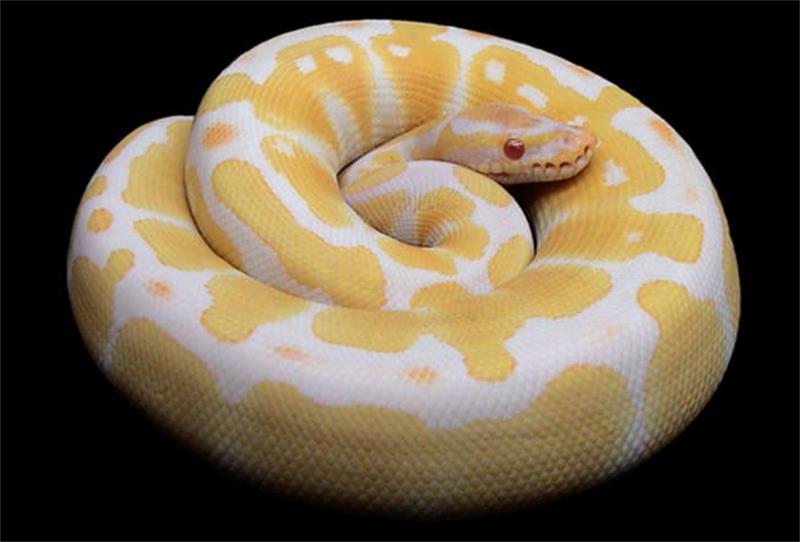
Feeding
Feeding is another important aspect of ball python care, as it affects your snake’s growth, health, and behavior. You should feed your ball python with thawed frozen rodents of appropriate size that are slightly larger than the widest part of your snake’s body . You should feed your snake once every 7-10 days for adults and once every 5-7 days for juveniles . You should avoid feeding live prey as they can injure your snake. You should also provide fresh water at all times and change it daily.
Some tips for feeding your ball python include:
- Thawing: You should thaw frozen rodents in the refrigerator overnight or in cold water until they are completely defrosted . You should never thaw frozen rodents in the microwave or in hot water as this can cause bacterial growth or uneven heating .
- Warming: You should warm thawed rodents to body temperature (around 100°F) by placing them in a plastic bag and submerging them in warm water for a few minutes. You should never warm thawed rodents in the oven or on a heating pad as this can cause burning or drying.
- Offering: You should offer warmed rodents to your ball python by dangling them in front of your snake with a pair of tongs or tweezers . You should avoid using your hands or fingers as this can cause your snake to mistake them for prey and bite you . You should also avoid leaving thawed rodents in your snake’s enclosure for too long as this can attract flies or bacteria.
- Handling: You should avoid handling your ball python before or after feeding as this can cause stress or regurgitation in your snake . You should wait at least 24 hours after feeding before handling your snake again.
Some common feeding problems in ball pythons include:
- Refusal: Ball pythons are notorious for refusing food for various reasons, such as stress, illness, shedding, breeding season, or preference . If your ball python misses more than a couple of consecutive feeding sessions, especially if they are not shedding at the time, you should consult your vet for advice . You can also try some tricks to entice your ball python to eat, such as changing the type or size of the prey, scenting the prey with another animal (such as a mouse or a chick), offering the prey at night or in a dark place, or placing the prey in a paper bag or a hide box with your snake.
- Regurgitation: Regurgitation is when your ball python vomits up its food shortly after eating it . This can be caused by stress, overfeeding, improper temperature or humidity, handling, or illness . If your ball python regurgitates its food, you should wait at least two weeks before offering food again and make sure the enclosure conditions are optimal . You should also offer a smaller prey item than usual and monitor your snake for any signs of illness.
- Impaction: Impaction is when your ball python has difficulty passing feces or urates due to a blockage in its digestive tract . This can be caused by ingesting indigestible materials (such as substrate, hair, bones, or teeth), dehydration, low temperature, parasites, or tumors . If your ball python has not defecated for more than a month, has a swollen abdomen, or shows signs of pain or discomfort, you should take it to the vet for diagnosis and treatment.
Handling
Handling is an optional but enjoyable part of ball python care, as it allows you to bond with your snake and observe its personality. Ball pythons are generally docile and tolerant of handling, but they may also bite or hide if they feel threatened or stressed. You should handle your ball python gently and with confidence. Some tips for handling your ball python include:
- Frequency: You should handle your ball python regularly (at least once a week) to keep it tame and accustomed to human contact . However, you should not handle your snake too often (more than once a day) as this can cause stress and reduce its appetite.
- Timing: You should handle your ball python at a time when it is most active and alert, which is usually at night or around dawn and dusk . You should avoid handling your snake when it is shedding or right after it has eaten.
- Duration: You should handle your ball python for short periods of time (10-15 minutes) to prevent it from getting cold or stressed . You should also pay attention to your snake’s body language and put it back in its enclosure if it shows signs of discomfort or aggression (such as hissing, striking, or curling into a ball).
- Technique: You should handle your ball python with both hands and support its body evenly along its length . You should avoid grabbing its head or tail or squeezing its body too hard . You should also avoid making sudden movements or noises that could startle your snake.
- Safety: You should wash your hands before and after handling your snake to prevent the transmission of diseases or parasites . You should also keep your snake away from other pets or people who may harm it or be harmed by it . You should also be prepared for the possibility of being bitten by your snake and know how to react if it happens (see below).
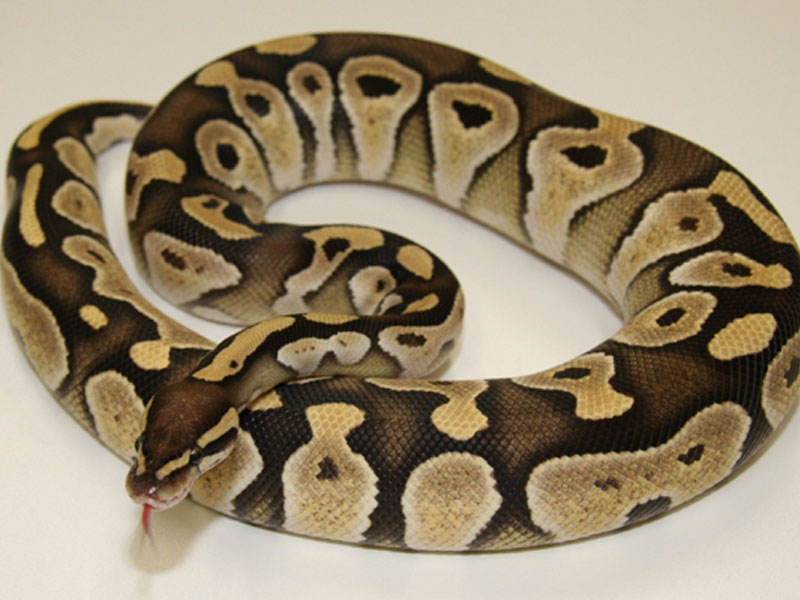
Biting
Biting is an uncommon but possible behavior in ball pythons. Ball pythons may bite if they feel threatened, stressed, or hungry. Ball python bites are usually not very serious, as they have small teeth and weak venom that is not harmful to humans. However, they can still cause pain, bleeding, bruising, or infection. If you are bitten by your ball python, you should follow these steps:
- Remain calm: Do not panic or pull away from your snake, as this can cause more damage or make your snake bite harder. Instead, stay calm and try to relax your snake by gently stroking its body or blowing on its face.
- Remove the snake: Once your snake has released its grip, carefully remove it from your hand or arm and place it back in its enclosure. Do not punish or yell at your snake, as this will only make it more fearful or aggressive.
- Clean the wound: Wash the bite area with soap and water and apply pressure with a clean cloth or bandage to stop the bleeding. You may also apply an antiseptic cream or spray to prevent infection.
- Seek medical attention: If the bite is deep, large, or does not stop bleeding after 15 minutes, you should seek medical attention as soon as possible. You may also need a tetanus shot or antibiotics if the wound becomes infected.
- Prevent future bites: To prevent your ball python from biting you again, you should try to identify and avoid the triggers that caused the bite. For example, you should not handle your snake when it is shedding or right after it has eaten. You should also make sure your snake is well-fed and comfortable in its enclosure. You should also wash your hands before handling your snake to remove any food smells that could attract it.
Conclusion
Ball pythons are amazing pets that can bring you joy and satisfaction for many years if you care for them properly. By following this guide and providing your ball python with a suitable habitat, a nutritious diet, regular handling, and veterinary care when needed, you can ensure your snake’s health and happiness. Remember that your ball python depends on you for its well-being and deserves your respect and love.



